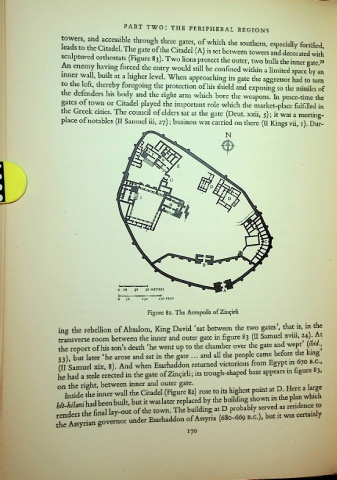Page 199 - The Art & Architecture of the Ancient Orient_Neat
P. 199
PART TWO: THE PERIPHERAL
REGIONS
2Jf^Swrit3£a!
pturcd orthostats (Figure 83). Two lions protect the outer, two bulls the inner gate »
An enemy having forced the entry would still be confined within a limited space by an
inner wall, built at a higher level. When approacliing its gate die aggressor had to turn
to the left thereby foregoing the protection of his shield and exposing to the missiles of
the defenders Ins body and the right arm which bore the weapons. In peace-time the
gates of town or Citadel played the important role which the market-place fulfilled in
the Greek cities. The council of elders sat at the gate (Dcut. xxii, 5); it was a meeting-
place of notables (II Samuel iii, 27); business was carried on there (II Kings vii, 1). Dur-
N
1
m
ML
O 10 30 50 METRES
o 30 IJO 250 FEET
Figure 82. The Acropolis of Zin^irli
ing the rebellion of Absalom, King David ‘sat between the two gates’, that is, in the
transverse room between the inner and outer gate in figure 83 (II Samuel xviii, 24). t
the report of his son’s death ‘he went up to die chamber over die gate and wept (1 bid.,
33) but later ‘he arose and sat in the gate ... and all the people came before the king
(ll Samuel xix, 8). And when Esarhaddon returned victorious from Egypt in 70 b.c.,
he had a stele erected in the gate of Zin9irli; its trough-shaped base appears in figure 83,
tS Citadel (Figure 82) rose to its highest point at D Hercajarge
SitySn governor under 1-aarl,addon of Assyria (<58o-«<, D.C.), bur.. war remedy
170
-

